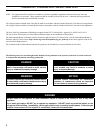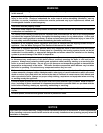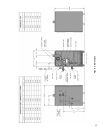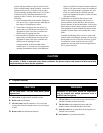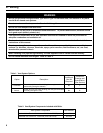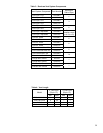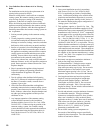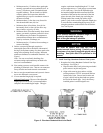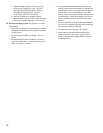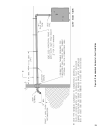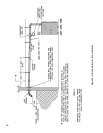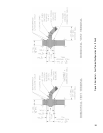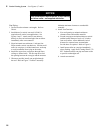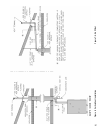10
A. Vent Guidelines Due to Removal of an Existing
Boiler
For installations not involving the replacement of an
existing boiler, proceed to Step B.
When an existing boiler is removed from a common
venting system, the common venting system is likely
to be too large for proper venting of the remaining
appliances. At the time of removal of an existing
boiler, the following steps shall be followed with each
appliance remaining connected to the common venting
system placed in operation, while the other appliances
remaining connected to the common venting system are
not in operation:
1. Seal any unused openings in the common venting
system.
2. Visually inspect the venting system for proper
size and horizontal pitch and determine there is no
blockage or restriction, leakage, corrosion, and other
deciencies which could cause an unsafe condition.
3. Insofar as is practical, close all building doors and
windows and all doors between the space in which
the appliances remaining connected to the common
venting system are located and other spaces of the
building. Turn on clothes dryers and any appliance
not connected to the common venting system.
Turn on any exhaust fans, such as range-hoods and
bathroom exhausts, so they will operate at maximum
speed. Do not operate a summer exhaust fan. Close
replace dampers.
4. Place in operation the appliance being inspected.
Follow the Lighting (or Operating) Instructions.
Adjust thermostat so appliance will operate
continuously.
5. Test for spillage at the draft hood relief opening
after ve (5) minutes of main burner operation. Use
the ame of a match or candle, or smoke from a
cigarette, cigar or pipe.
6. After it has been determined that each appliance
remaining connected to the common venting system
properly vents when tested as outlined above, return
doors, windows, exhaust fans, replace dampers and
any other gas burning appliance to their previous
conditions of use.
7. Any improper operation of the common venting
system should be corrected so the installation
conforms with the National Fuel Gas Code, NFPA
54/ANSI Z223.1. When resizing any portion of the
common venting system, the common venting
system should be resized to approach the minimum
size as determined using the appropriate tables in
Part II in the National Fuel Gas Code, NFPA 54/
ANSI Z223.1.
B. General Guidelines
1. Vent system installation must be in accordance
with National Fuel Gas Code, NFPA 54/ANSI
Z221.3 or applicable provisions of local building
codes. Contact local building or re ofcials about
restrictions and installation inspection in your area.
2. Refer to the appropriate drawings in this section of
this manual to determine the proper conguration of
venting system. See Table 1.
3. This appliance requires a Special Gas Vent. The
product is designed to use Burnham supplied AL29-4C
®
Stainless Steel vent system components. The following
manufacturers offer similar AL 29-4C
®
components
and are approved for use with this product. Heat-Fab
Inc. - Saf-T-Vent (800-772-0739); Flex-L International
Inc. - Star-34 (800-561-1980); Z-Flex U. S., Inc.
- Z-Vent (800-654-5600); and Protech Systems, Inc.-
FasNSeal™ (800-766-3473) or equivalent. The use
of these alternate manufacturer’s venting systems will
require adapters to connect to the Burnham supplied
vent connector and vent terminal. These adapters are
not supplied with this unit and should be obtained from
the supplier of the alternate manufacturer’s venting
system. See Table 3 for complete list of Burnham
Vent System Components.
4. Horizontal vent pipe must maintain a minimum ¼
inch per foot slope away from boiler.
5. Use noncombustible ¾ inch pipe strap to support
horizontal runs and maintain vent location and
slope while preventing sags in pipe. Do not restrict
thermal expansion or movement of vent system.
Maximum support spacing is ve (5) feet. Do not
penetrate any part of the vent system with fasteners.
6. Vent length restrictions are based on equivalent
length of vent pipe (total length of straight pipe
plus equivalent length of ttings). Maximum
vent lengths are listed in Table 4. Do not exceed
maximum vent lengths. Table 3 lists equivalent
lengths for ttings. Do not include vent terminals in
equivalent feet calculations.
7. Provide and maintain vent pipe minimum clearances
to combustible materials. Vent pipe minimum
clearance to combustible material is four (4) inches
when vent is installed in a fully enclosed (chase)
application or three (3) inches when vent is installed
with at least one side open, similar to a joist bay
application. Use double wall thimble [Burnham
Part No. 8116115 (3”), 100185-01 (4”)] when
penetrating a combustible wall.
8. Do not install venting system components on
the exterior of the building except as specically
required by these instructions. The vent termination
location is restricted as follows:



